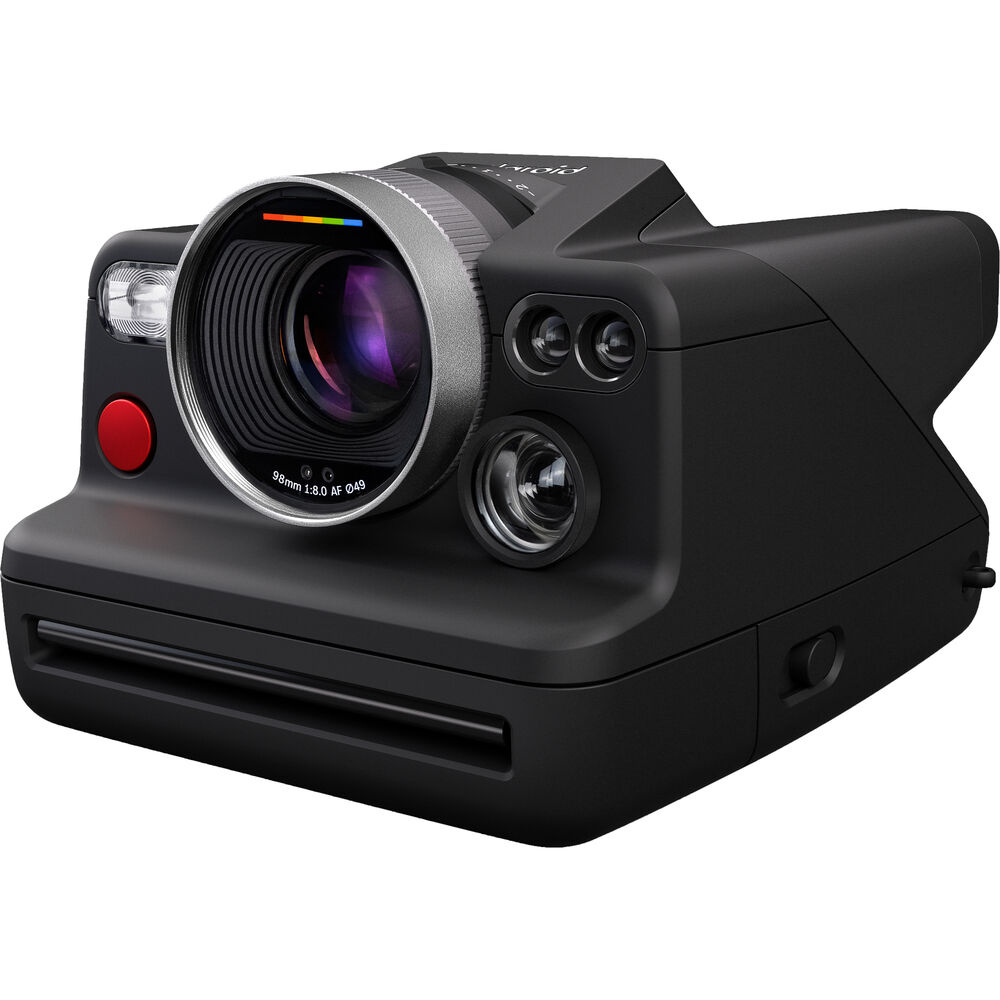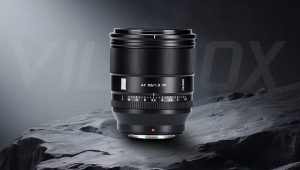The pictures business is suffering from the corpses of once-mighty manufacturers that dominated their markets for many years earlier than making single, catastrophic selections that destroyed every thing they’d constructed. The worst half is not that these firms failed. It is that usually, they’d the know-how, assets, and market place to dominate the longer term they as a substitute selected to disregard.
1. Polaroid: Ignoring the Digital Revolution They Helped Allow
Polaroid dominated on the spot pictures for many years with cameras and movie techniques that appeared virtually magical to shoppers who have been used to ready days or perhaps weeks to see their developed pictures. The corporate had constructed an empire across the need for quick gratification in pictures, creating cameras that delivered completed prints inside minutes and establishing a enterprise mannequin that generated recurring income via movie gross sales. When digital pictures emerged, Polaroid ought to have been probably the most pure firm to embrace it, as their whole model was constructed round on the spot outcomes, and digital cameras delivered the final word on the spot gratification by displaying photos instantly on LCD screens. As an alternative, Polaroid struggled to efficiently transition from on the spot movie to digital pictures, regardless of coming into the digital market within the Nineties with cameras just like the PDC-2000 and numerous digital merchandise. The corporate’s digital efforts have been inconsistent and did not seize the identical market enthusiasm as their on the spot movie merchandise, with executives seemingly unable to translate Polaroid’s on the spot gratification model identification into compelling digital merchandise that might compete successfully in opposition to devoted digicam producers.
 Polaroid’s executives satisfied themselves that customers would at all times want bodily prints over digital photos, basically misunderstanding how pictures was evolving from bodily keepsakes to digital sharing and communication. They invested closely in enhancing on the spot movie chemistry and growing new movie codecs whereas ignoring their very own digital analysis and growth initiatives that might have positioned them as leaders within the digital on the spot pictures market. The corporate really held patents associated to polarizing know-how that turned important to LCD shows, improvements that might have positioned them strategically within the rising digital show market if they’d acknowledged and leveraged these connections successfully. By the point Polaroid realized that customers valued the comfort and shareability of digital photos over the nostalgic enchantment of on the spot movie, firms like Canon and Sony had already established themselves as digital pictures leaders.
Polaroid’s executives satisfied themselves that customers would at all times want bodily prints over digital photos, basically misunderstanding how pictures was evolving from bodily keepsakes to digital sharing and communication. They invested closely in enhancing on the spot movie chemistry and growing new movie codecs whereas ignoring their very own digital analysis and growth initiatives that might have positioned them as leaders within the digital on the spot pictures market. The corporate really held patents associated to polarizing know-how that turned important to LCD shows, improvements that might have positioned them strategically within the rising digital show market if they’d acknowledged and leveraged these connections successfully. By the point Polaroid realized that customers valued the comfort and shareability of digital photos over the nostalgic enchantment of on the spot movie, firms like Canon and Sony had already established themselves as digital pictures leaders.
Polaroid filed for chapter in 2001, then once more in 2008 beneath totally different possession amid numerous enterprise challenges, properly after digital cameras had grow to be mainstream shopper merchandise and basically modified the pictures market. killed not by superior know-how however by their incapability to acknowledge that their clients wished on the spot outcomes, not essentially on the spot movie. The model was ultimately bought by different firms and now exists primarily as a way of life model promoting retro-styled on the spot cameras to hipsters and nostalgic shoppers, a pale shadow of the revolutionary know-how firm that after appeared positioned to dominate the way forward for pictures. The irony is that fashionable on the spot cameras just like the Fujifilm Instax series and Polaroid’s own revival products are in style exactly as a result of they provide the bodily, tactile expertise that Polaroid pioneered, however the firm that invented on the spot pictures missed the chance to steer each the digital and analog revival markets as a result of they could not see past their present enterprise mannequin.
2. Rollei: Refusing to Abandon Twin-Lens Reflex for 35mm SLRs
Rollei constructed their legendary fame on the Rolleiflex and Rolleicord twin-lens reflex cameras that turned the gold normal for medium format pictures amongst professionals and severe amateurs from the Twenties via the Nineteen Sixties. These cameras have been mechanical marvels with distinctive construct high quality, exact German engineering, and optical excellence that made them the popular selection for portrait photographers, style shooters, and anybody who wanted the superior picture high quality that bigger movie codecs offered over 35mm techniques. The Rolleiflex particularly turned an icon {of professional} pictures, immediately recognizable and revered worldwide for its reliability and picture high quality. Photographers like Richard Avedon, Diane Arbus, and numerous others constructed their careers utilizing Rollei TLR cameras that delivered constant, skilled outcomes with a novel waist-level capturing expertise that purchasers related to severe, inventive pictures.
Nevertheless, by the late Fifties and early Nineteen Sixties, the pictures market was clearly shifting towards 35mm SLR cameras that provided better versatility, lighter weight, interchangeable lenses, and simpler operation for the rising variety of beginner photographers coming into the market. Canon, Nikon, and Pentax have been constructing complete 35mm SLR techniques that offered enough picture high quality for {most professional} and beginner functions whereas being considerably extra moveable and inexpensive than medium format techniques. Whereas Rollei did enter the 35mm market with the Rollei 35 compact in 1966 and launched the SL66 medium format SLR additionally in 1966, adopted by 35mm SLRs within the late Nineteen Sixties and Seventies, these efforts have been usually late to market, costly, and fewer aggressive than the great techniques that Canon and Nikon had constructed round their SLR platforms. Rollei appeared unable to completely decide to 35mm SLR growth with the identical focus and assets they dedicated to perfecting their TLR techniques.
This strategic blindness wasn’t nearly lacking a market development: it mirrored Rollei’s basic misunderstanding of how pictures was evolving from a specialised skilled software towards a extra accessible, versatile medium that appealed to a broader vary of customers. The corporate had the engineering experience, manufacturing functionality, and model status to create distinctive 35mm SLR cameras that might have competed straight with Canon and Nikon, however they have been so dedicated to the technical superiority of their TLR techniques that they could not acknowledge when market preferences had shifted completely towards totally different priorities. By the point Rollei lastly launched aggressive 35mm SLR cameras within the Seventies and Eighties, Canon and Nikon had already established dominant market positions with complete lens techniques, equipment, {and professional} help that Rollei could not match as a late entrant to the SLR market.
Rollei’s decline was notably tragic as a result of their engineering excellence and optical experience have been by no means in query, however their late and costly entries into aggressive markets have been compounded by broader enterprise issues together with overexpansion, pricey manufacturing strikes to Singapore, and administration points throughout the Seventies that led to chapter. The corporate struggled via numerous possession modifications earlier than primarily disappearing from mainstream digicam manufacturing, forsaking solely their fame for distinctive TLR cameras that are actually collector’s objects prized for his or her construct high quality and historic significance. As we speak, photographers converse reverently about classic Rolleiflex cameras (I definitely love mine), however the model that might have been a serious participant in fashionable digicam growth as a substitute turned a reminder of what occurs when even glorious engineering cannot overcome strategic missteps and enterprise mismanagement throughout vital market transitions.
3. Argus: Failing to Evolve Past Nineteen Thirties Rangefinder Design
Argus turned a major drive within the American digicam market from the Nineteen Thirties via the early Fifties with easy, inexpensive rangefinder cameras that made pictures accessible to middle-class shoppers who beforehand could not afford high quality cameras. The Argus C3, nicknamed “the brick” for its distinctive rectangular form and stable development, turned one of many best-selling cameras in American historical past and launched thousands and thousands of individuals to severe pictures with its dependable operation, sharp lens, and affordable value level. Argus had efficiently disrupted the pictures market by creating cameras that delivered good outcomes at consumer-friendly costs, constructing a loyal buyer base that appreciated the corporate’s sensible, no-nonsense strategy to digicam design. The C3 and associated fashions weren’t glamorous or revolutionary, however they labored reliably and produced high quality pictures for households, hobbyists, and even some skilled photographers who valued their dependability and affordability over costlier German alternate options.
The vital mistake got here when Argus struggled to efficiently transition past their rangefinder system even because the market shifted towards SLR cameras that provided superior focusing accuracy, interchangeable lenses, and extra intuitive operation. The corporate did try to evolve, introducing the Argus SLR in 1960 and different fashions that confirmed consciousness of fixing market wants, however these efforts have been poorly executed and could not compete successfully with the superior Japanese SLR techniques that have been quickly establishing market dominance. Argus’s SLR makes an attempt suffered from inferior construct high quality, restricted lens choices, and better costs that negated their conventional worth benefit, whereas firms like Canon, Nikon, and Pentax have been constructing complete SLR ecosystems that offered each superior efficiency and aggressive pricing that undercut Argus’s market place.
This strategic failure was compounded by company instability, together with acquisition by Sylvania in 1959 and subsequent possession modifications that disrupted product growth and market focus throughout the vital transition interval when SLR know-how was changing into mainstream. The corporate that had constructed success on understanding and serving American photographers apparently misplaced that connection throughout a interval of company upheaval and administration modifications that prevented constant strategic execution. SLR cameras provided important sensible benefits for beginner photographers: simpler focusing, no parallax error, correct framing via the taking lens, and the potential for interchangeable lenses that might develop with customers’ growing expertise and pursuits. Argus’s makes an attempt to compete on this market have been handicapped by each poor product execution and organizational instability that prevented the centered growth effort wanted to create aggressive SLR techniques.
By the mid-Nineteen Sixties, Argus discovered themselves attempting to promote Nineteen Thirties-style rangefinder cameras to shoppers who more and more anticipated SLR performance and comfort, competing in opposition to Japanese producers who had embraced SLR know-how and constructed complete techniques round it. The corporate’s market share collapsed as clients defected to Canon, Nikon, Pentax, and different manufacturers that provided fashionable digicam designs with options that matched up to date photographic wants and expectations. Argus primarily disappeared from the intense digicam market by the early Seventies, destroyed not by inferior engineering or manufacturing capabilities, however by their incapability to acknowledge that profitable merchandise ultimately grow to be out of date when market circumstances and shopper preferences evolve past their authentic design parameters.
4. Yashica: Destroying Their Popularity With Low cost Client Cameras
Yashica had constructed a stable fame for well-made, inexpensive cameras that provided good efficiency for beginner and semi-professional photographers who could not afford Leica or Nikon gear however wished one thing higher than primary shopper cameras. The Yashica Electro collection and numerous SLR fashions have been revered for his or her construct high quality, reliability, and photographic capabilities that exceeded their modest costs. Skilled photographers won’t have chosen Yashica as their main digicam, however they revered the model for producing trustworthy, succesful cameras that gave good outcomes with out premium pricing. Yashica had efficiently positioned themselves as the worth different to costly German and Japanese cameras, constructing buyer loyalty via constant high quality and affordable costs that made good pictures accessible to budget-conscious photographers.
Within the Eighties, Yashica made the deadly choice to desert their fame for high quality in favor of competing within the low-cost shopper digicam market with plasticky, unreliable cameras that prioritized low costs over construct high quality and photographic efficiency. The corporate started producing disposable cameras, low-cost point-and-shoot fashions, and low-end SLRs that felt flimsy, carried out poorly, and failed continuously – the precise reverse of every thing that had made Yashica revered amongst photographers who valued reliability and efficiency over luxurious options. The outcomes have been combined – whereas Yashica did produce some acclaimed cameras just like the T-series compacts with Carl Zeiss lenses that have been genuinely glorious, the model’s total fame suffered from inconsistent high quality management and a complicated product lineup that ranged from low-cost disposables to premium compact cameras. The corporate’s technique of competing throughout a number of value factors with out clear model positioning confused clients and diluted the Yashica identify’s which means within the market. Photographers by no means knew whether or not a Yashica digicam could be a dependable software or a disappointing finances product, and this inconsistency steadily eroded the belief and model loyalty that Yashica had spent a long time constructing amongst budget-conscious photographers who anticipated dependable efficiency.
By the early 2000s, Yashica’s inconsistent model positioning had confused the market about what Yashica cameras represented, making it tough for shoppers to grasp whether or not they have been shopping for premium or finances merchandise. When digital pictures emerged, Yashica lacked the clear market place and buyer loyalty wanted to compete successfully in digital digicam growth, having spent years with an unclear model technique that served neither finances nor premium markets notably properly. Kyocera discontinued Yashica digicam manufacturing in 2005, with the Yashica identify now primarily used for licensing offers on numerous shopper electronics that additional complicate the model’s photographic heritage. As we speak, classic Yashica cameras from the corporate’s high quality period are appreciated by movie photographers and collectors, however the model that after represented inexpensive photographic excellence turned a cautionary story about how rapidly fame will be destroyed when firms abandon the rules that made them profitable. The lesson from Yashica’s failure is that competing on value alone with out sustaining high quality requirements would not simply fail – it actively destroys the model fairness and buyer relationships that took a long time to construct.
5. Mamiya: Lacking the Digital Medium Format Revolution
Mamiya dominated medium format pictures for many years with cameras that have been the gold normal for style, portrait, and industrial photographers who wanted superior picture high quality and bigger negatives than 35mm techniques might present. The RB67 and RZ67 techniques have been legendary amongst skilled photographers for his or her construct high quality, lens choice, and picture high quality that exceeded 35mm techniques in each measurable means. Mamiya understood medium format pictures higher than any competitor and had constructed a loyal buyer base of pros who relied on their cameras for high-end industrial work. When digital pictures emerged, Mamiya ought to have been the apparent selection to steer digital medium format growth, combining their mechanical experience with digital sensors to create cameras that maintained medium format’s picture high quality benefits whereas including digital comfort and workflow advantages.
As an alternative, Mamiya struggled with their transition to digital medium format regardless of introducing the ZD system in 2006-2007 and partnering with digital again producers like Section One and Leaf all through the 2000s. Whereas Mamiya had the technical experience and market place to steer digital medium format growth, their digital efforts have been inconsistent and failed to ascertain the market dominance they’d loved in movie medium format. By the point newer firms like Fujifilm entered digital medium format with the GFX system in 2017 and Hasselblad revitalized their choices with the X1D in 2016, Mamiya had misplaced momentum and market place to extra centered opponents who constructed complete digital medium format ecosystems from the bottom up. Mamiya’s digital cameras have been technically competent however provided no compelling benefits over techniques that had years of growth benefit and established market presence.
The corporate that had outlined medium format pictures for generations discovered itself marginalized within the digital medium format market, ultimately seeing its property acquired by Section One, which continues a few of Mamiya’s design legacy of their present medium format techniques. As we speak, Mamiya’s movie cameras are collector’s objects prized for his or her construct high quality and optical excellence, however the model that ought to have been main digital medium format innovation as a substitute turned one other casualty of inconsistent execution throughout a vital market transition. The irony is that present digital medium format cameras use lots of the design rules and ergonomic ideas that Mamiya pioneered, however Mamiya receives not one of the credit score or market advantages from improvements they helped develop.
The Sample: Success Breeds Vanity, Vanity Breeds Demise
These seven firms shared a typical deadly flaw: they turned so profitable with their present methods that they could not think about circumstances the place these methods would fail. Every firm had dominated their market section for years or a long time, constructing confidence that their understanding of buyer wants and market dynamics was superior to opponents who have been pursuing totally different approaches. This success created organizational vanity that manifested as dismissal of recent applied sciences, resistance to altering buyer preferences, and overconfidence in strategic selections that appeared clearly unsuitable looking back. The tragic irony is that success gave these firms the assets, market place, and buyer loyalty they wanted to outlive technological transitions, however it additionally gave them the vanity that prevented them from utilizing these benefits successfully.
Trendy digicam producers dealing with challenges from smartphone pictures, synthetic intelligence, and altering shopper habits ought to research these failures fastidiously, as a result of the identical patterns of profitable firms dismissing disruptive applied sciences are seen all through the present pictures business. Corporations that dismiss computational pictures as inferior to conventional optics, ignore the rising significance of video options, or assume that digicam fans will proceed shopping for devoted cameras no matter smartphone capabilities are making the identical basic errors that killed Kodak, Polaroid, and the others. The pictures business is at the moment experiencing technological modifications as important because the transition from movie to digital, and the businesses that survive will probably be people who study from these historic failures reasonably than repeating them with totally different applied sciences and totally different excuses for sustaining unsuccessful methods.






